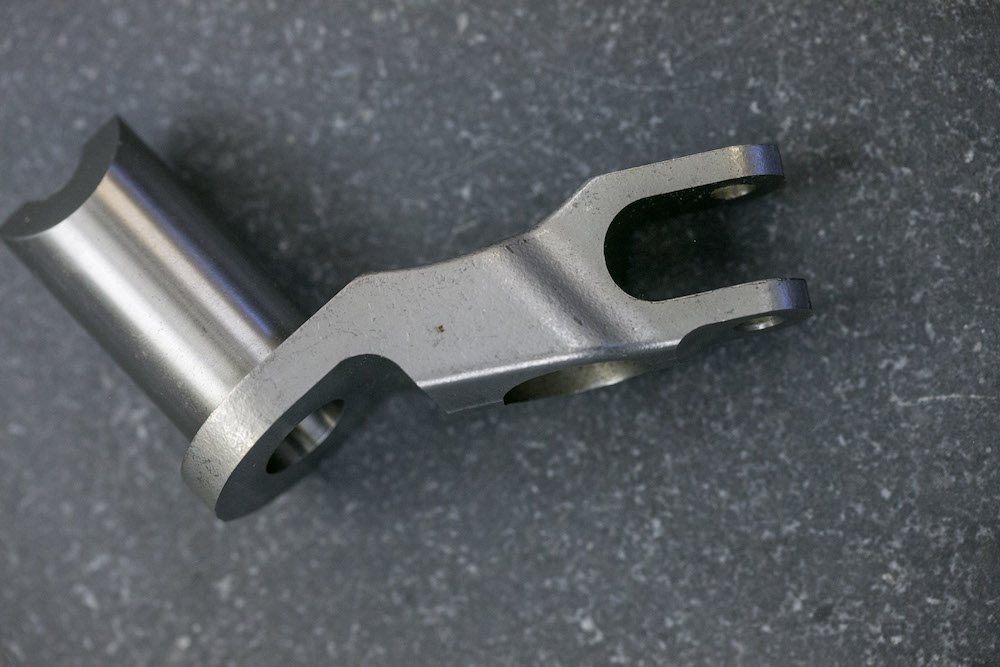Grinding is performed using a variety of methods, and it takes an experienced grinder to know what processes and techniques will produce reliable, durable parts. The skills and expertise to understand the combined effect different factors will have on the grinding process, and how they will affect the finished work, is vital to producing robust, reliable parts. One of the most important techniques we utilize to achieve these results is dynamic balancing, which helps achieve accurate results on complex or asymmetrical parts that cannot be statically balanced.
Sometimes the part is statically balanced due to the part having a symmetrical cross-section throughout the entire part, while other times a certain part may have an asymmetrical cross-section in some point or section in the part. For parts that are perfectly symmetrical small variations may not be noticeable at low RPM, but many of the parts that DPG works on, such as landing gears, are asymmetrical and oscillate at a high rotational speed, making out-of-round conditions both obvious and dangerous. This can affect the manner in which the part rotates, causing uneven results and imperfections in the finish. That’s where accurate dynamic balancing becomes critical— if one small part is out of balance, the entire set up is at risk. Proper balancing makes it possible for parts to be ground within the proper rotational work speed and within the engineered tolerances.
Dynamic Balancing in Precision Grinding Produces Robust, Reliable Parts
Landing gear is one of the most important systems in aircraft operation, and ensuring its functionality is paramount. With lots of moving and interlocking components, proper sizing is of vital importance. Parts that are ground without consideration for these factors are likely to fail inspections, extending the cost and time required to get equipment into service as the work must be repeated or the part replaced entirely.
The importance of dynamic balance becomes apparent when these parts are rotating during grinding operations.
Achieving Dynamic Balance in Precision Grinding Operations
Dynamic balancing can apply to both tooling and parts, and ensuring that both are properly balanced during grinding processes ensures smooth operation. In precision grinding, static balance refers to the state when an object’s center of gravity is on its axis of rotation. When it is stationary in the machine gravity will not move the part about its axis when rotated to any given position. Dynamic balance takes into account the asymmetrical features of the part by applying counterweights and adjusting the grinding RPM to maintain the position of the part and eliminate vibration or chatter. As RPM accelerates, any slight deviation in the dynamic balancing of the part will become increasingly apparent and the balance will need to be adjusted.
Trust The Precision Grinding Experts for All Your Dynamic Balancing Needs
Duval’s grinders are precision grinding specialists. While many machine shops offer grinding services, it is not their main area of focus, and many of the more refined or nuanced techniques may be performed by grinders lacking the appropriate experience to complete the job. With over 70 years of precision grinding experience, our grinders are practiced in applying dynamic balancing to ensure the quality and performance of critical parts.
Contact Duval Precision Grinding today to learn more about how our experts are the right match for your grinding needs.

